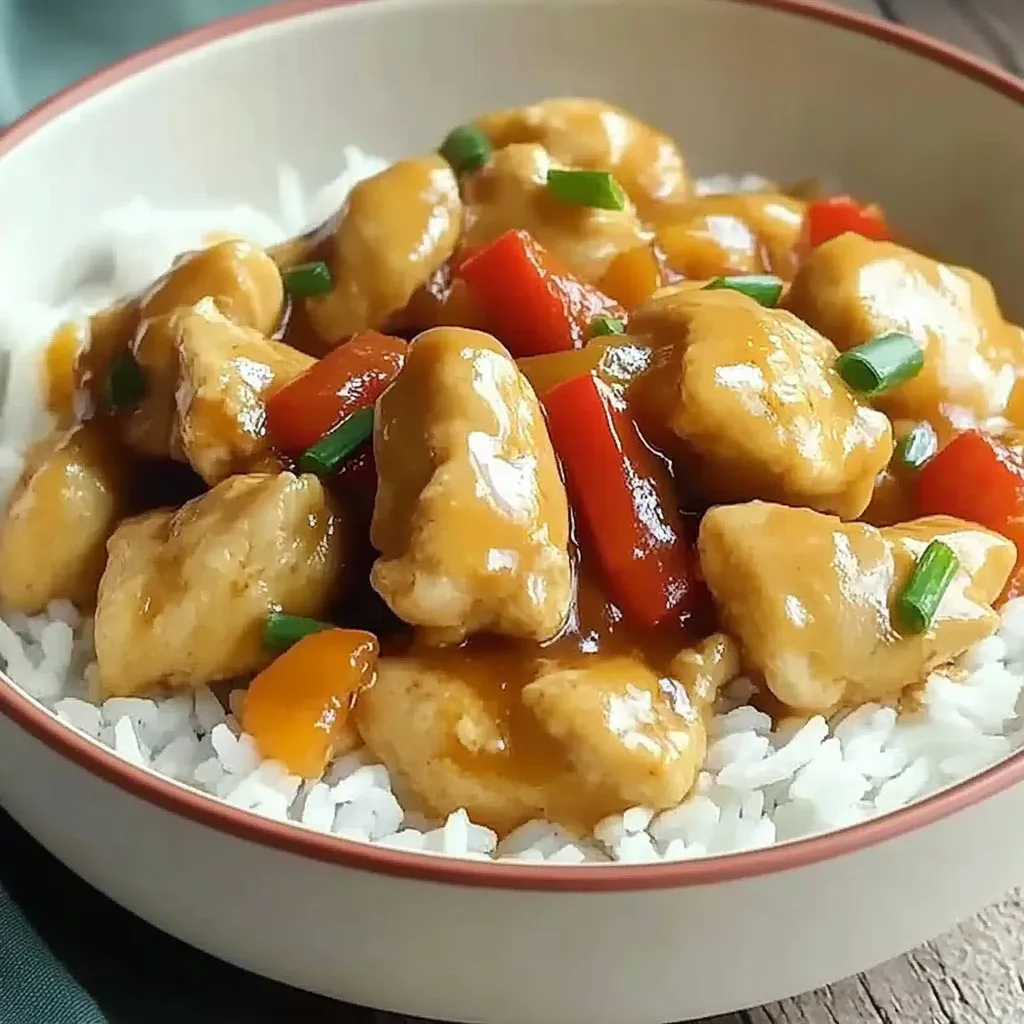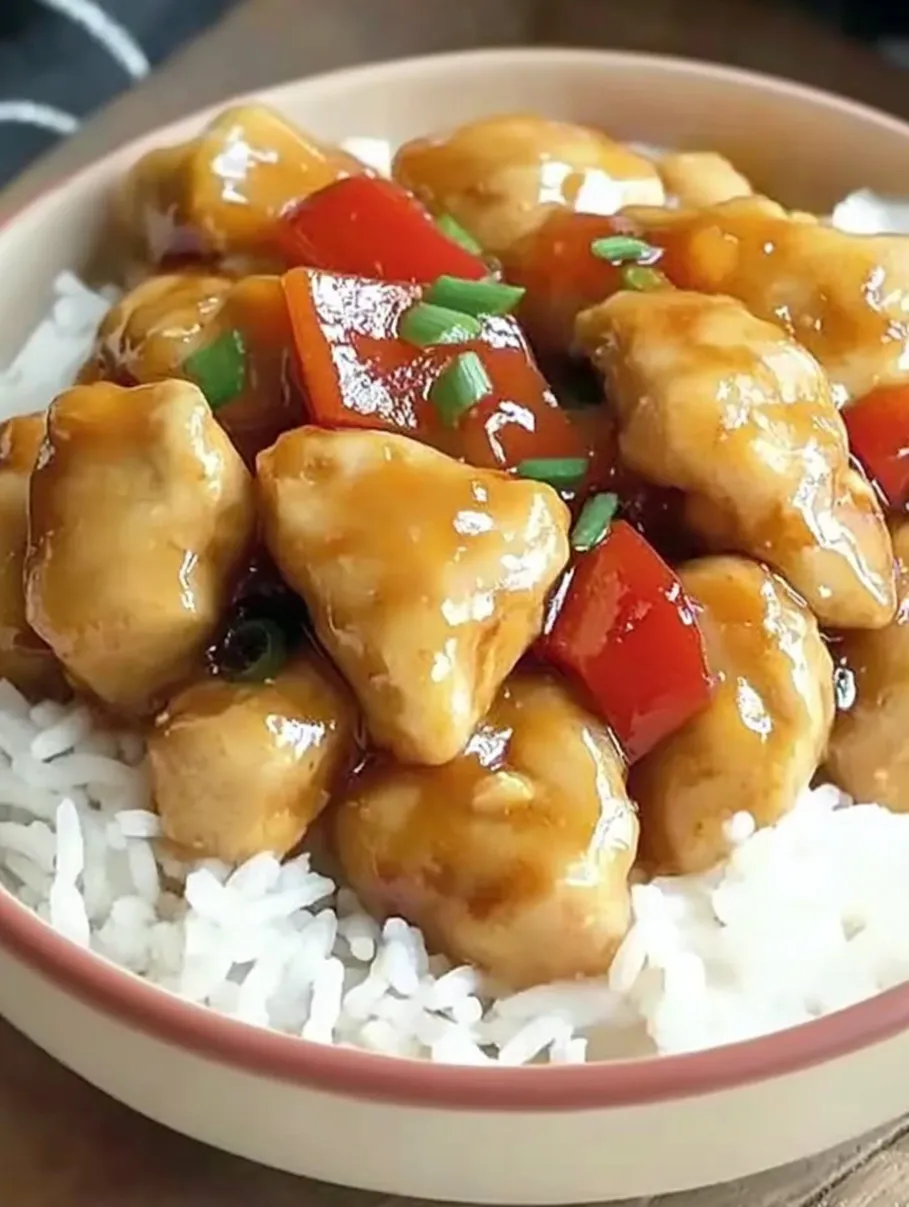 Pin
Pin
This Asian coconut chicken has become my go-to solution for quick weeknight dinners that still feel special. The crispy chicken pieces coated in a silky coconut sauce deliver restaurant-quality flavor with minimal effort.
I first created this dish when trying to recreate my favorite takeout flavors at home. After several attempts, this version won over even my pickiest family members, who now request it at least twice a month.
Ingredients
- Boneless skinless chicken breasts: Choose fresh, high-quality chicken for the best texture and flavor.
- Eggs: These create the perfect base for the crispy coating to adhere to.
- Cornstarch: Provides that signature light and crispy exterior that stays crunchy even after saucing.
- Canola or vegetable oil: Offers a neutral flavor perfect for frying at higher temperatures.
- Full-fat coconut milk: The essential ingredient that gives this dish its creamy richness. Low-fat versions simply will not deliver the same luxurious texture.
- Brown sugar: Adds depth and complexity beyond just sweetness. The molasses notes complement the coconut beautifully.
- Ground ginger and garlic powder: These aromatics provide warm background notes without overwhelming the delicate coconut flavor.
- Apple cider vinegar: Just a touch provides the perfect acid balance to cut through the richness.
Step-by-Step Instructions
- Season the Chicken:
- Take your diced chicken chunks and generously season them with sea salt and freshly ground black pepper. This foundational seasoning ensures the chicken has flavor even beneath the coating and sauce. Make sure your chicken pieces are relatively uniform in size to ensure even cooking.
- Create the Coating:
- Beat two large eggs in a bowl until they become frothy. The frothier the eggs, the lighter and airier your coating will be. In a separate bowl, add the cornstarch. The cornstarch creates a remarkably light and crispy exterior compared to flour, which would result in a heavier coating.
- Coat the Chicken:
- Dip each piece of seasoned chicken first into the frothy egg mixture, ensuring it's completely coated. Allow excess egg to drip off before transferring to the cornstarch. Roll the chicken in cornstarch until thoroughly covered with a dry, white coating. For best results, let the coated pieces rest for 1-2 minutes before frying to help the coating adhere better.
- Fry to Perfection:
- Heat your oil in a large pan until it reaches approximately 350°F. You can test by adding a tiny bit of cornstarch – if it sizzles immediately, your oil is ready. Work in batches to avoid overcrowding, which would lower the oil temperature and result in soggy chicken. Fry for 3-5 minutes per side until the exterior turns a beautiful golden brown and the chicken registers 165°F internally.
- Prepare the Coconut Sauce:
- Combine the brown sugar, coconut milk, ground ginger, apple cider vinegar, and garlic powder in a medium saucepan. Whisk thoroughly to prevent lumps, especially incorporating the brown sugar. Heat the mixture over low heat, allowing it to come to a gentle simmer. Notice how the sauce gradually changes color and thickens slightly.
- Combine and Simmer:
- Add your crispy fried chicken pieces to the simmering sauce, gently folding to coat each piece without breaking the crispy exterior. Allow the combination to simmer for 10-15 minutes. During this time, the sauce will continue to thicken and the flavors will meld together beautifully. The chicken will absorb some of the sauce while still maintaining its crispy coating.
 Pin
Pin
The coconut milk is truly the star ingredient here. I once tried to substitute heavy cream with a dash of coconut extract, and while edible, it lacked the authentic flavor profile that makes this dish special. My family still reminds me of this culinary mishap whenever I mention trying a shortcut.
Perfect Pairings
This Asian Coconut Chicken pairs beautifully with simple steamed jasmine rice, which soaks up the rich sauce perfectly. For a complete meal, I recommend adding a side of quickly stir-fried vegetables like snow peas, broccoli, or bell peppers. The crisp vegetables provide a textural contrast to the creamy chicken dish.
For an extra special touch, sprinkle some toasted coconut flakes and sliced green onions over the top just before serving. This adds both visual appeal and an additional layer of flavor that complements the dish perfectly.
Storage and Reheating
Store any leftovers in an airtight container in the refrigerator for up to 3 days. The sauce will thicken considerably when chilled, which is completely normal. To reheat, add a splash of coconut milk or water to thin the sauce slightly, then warm in a covered pan over low heat until the chicken is heated through.
I recommend reheating on the stovetop rather than in the microwave to better preserve the texture of both the chicken and the sauce. If you do use a microwave, use 50% power and stir halfway through to ensure even heating.
Make It Your Own
While this recipe is delicious as written, there are several ways to customize it to your preferences. For a spicier version, add a tablespoon of Thai red curry paste or a teaspoon of sriracha to the sauce. If you prefer a more savory profile, reduce the brown sugar by half and add a tablespoon of fish sauce for umami depth.
For texture variation, try adding vegetables directly to the sauce during the final simmering stage. Red bell peppers, snap peas, or bamboo shoots all work beautifully and absorb the flavors of the sauce while maintaining their crunch.
Recipe Questions & Answers
- → Can I use light coconut milk instead of full-fat?
Yes, but full-fat coconut milk is recommended for a creamier and richer sauce.
- → How do I make the chicken extra crispy?
Consider double-coating the chicken by dipping it back into the egg mixture and cornstarch before frying.
- → Can I add heat to the dish?
Absolutely! You can add red pepper flakes or a dash of Sriracha for a spicier flavor.
- → What sides pair well with this dish?
Steamed rice, stir-fried vegetables, or green salads go perfectly with Asian Coconut Chicken.
- → Can I prepare this dish ahead of time?
Yes, you can prepare the chicken and sauce separately and combine them when ready to serve. Reheat on low for best results.